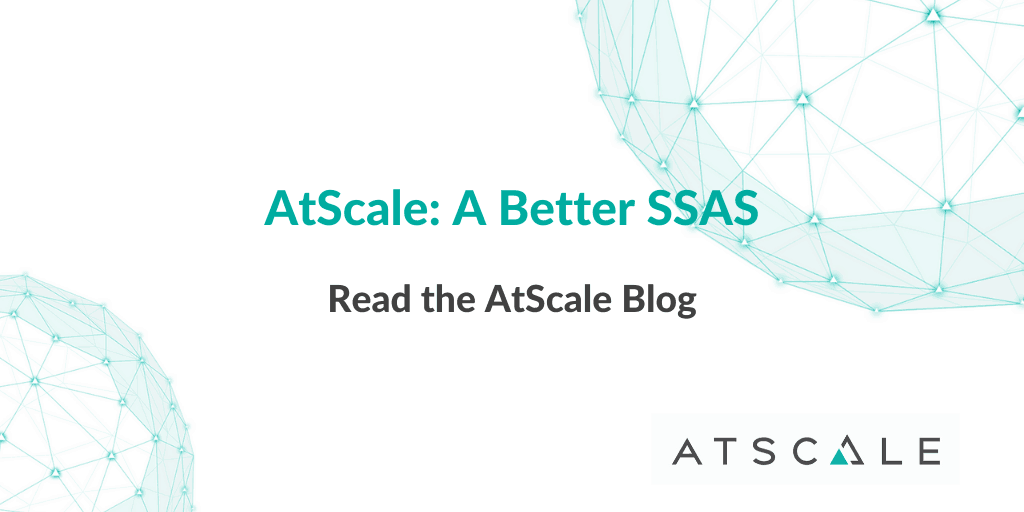November 4, 2020
The Three Opportunities for Cloud OLAP to Improve Enterprise Analytics
My co-founders and I started AtScale to change the trajectory of the analytics tools of our day. As consumers of tools like Microstrategy, Qlik and SQL Server Analysis Services (SSAS) at Yahoo!, we were often disappointed by the complexity of doing what we thought were simple things, and we failed to make these tools that were born in the 90s work at Yahoo! scale. In this post, I will show you how we took one of those tools, SSAS, and made it easier, more modern and made it work at scale.
Multidimensional Modeling for Everyone
Tools like SSAS assume that users have a deep understanding of dimensional modeling. SSAS in particular takes a parts assembly line approach to building models. It’s the same as taking the parts of a car engine, dropping them on the shop floor and expecting the mechanic to know how to assemble the engine and get it running. It’s do-able, but you’d better know a lot about car engines and all their parts. With AtScale, we took a tops down approach to creating models without sacrificing re-usability and collaboration.
See how AtScale simplifies the modeling experience (video will start at the relevant point):
Convert SSAS Models into AtScale Virtual Cubes with Just a Few Clicks
You probably have some pretty sophisticated SSAS cubes that a lot of business users rely on every day. It’s a scary proposition to migrate to a new data platform like Snowflake, Redshift or Google BigQuery and lose all that functionality that business users need. With AtScale’s SSAS cube converter, you can have your cake and eat it too. With just a few clicks, AtScale will read SSAS’s XMLA cube file and convert it into an AtScale Virtual Cube on top of any data platform you wish.
See how AtScale can convert a complex SSAS cube into an AtScale Virtual Cube (video will start at the relevant point):
Create Power BI Reports with a Live, MDX Connection to AtScale
If you’re a Microsoft shop, Power BI and Excel are critical tools used for visualization and analysis. AtScale’s MDX support means that Power BI and Excel can connect to a single semantic layer on your cloud on on-premise data platforms and enjoy the same governance, performance and ease of use with a live connection to the data. AtScale looks just like SSAS to these tools so there’s no need to retrain users on another language or tool.
See how AtScale can connect “Live” to Snowflake with Power BI using AtScale’s built-in MDX connector (video will start at the relevant point):
As you can see above, modernizing your analytics infrastructure doesn’t mean you have to lose the multidimensional functionality that your users want and need. With AtScale, you can ditch the antiquated OLAP architecture but keep its power, ease of use and flexibility. Modernize your analytics stack and move to the cloud while preserving the power and ease of use that OLAP delivers with AtScale.
For more information on how AtScale can help you modernize your SSAS environment, check out this datasheet.
ANALYST REPORT